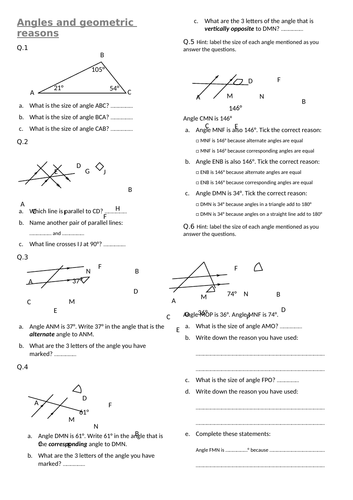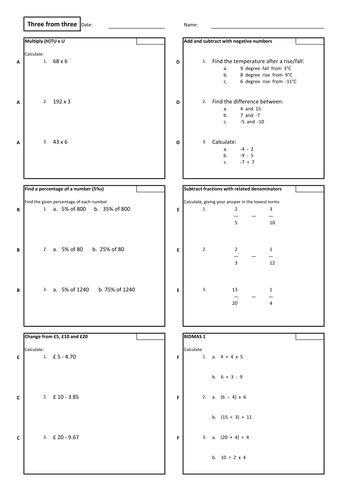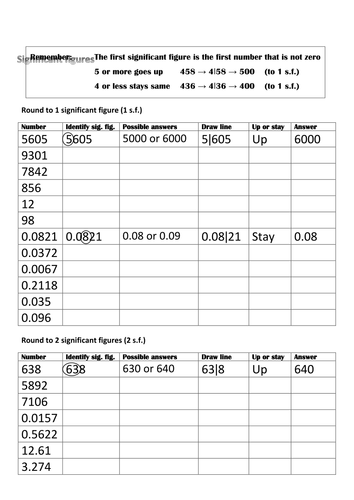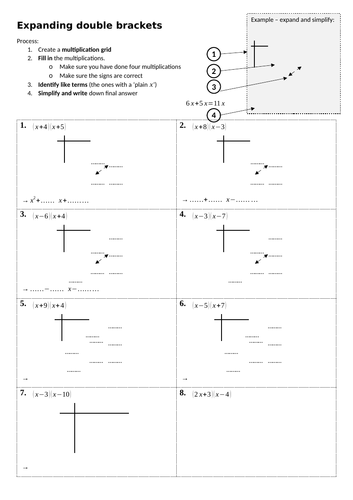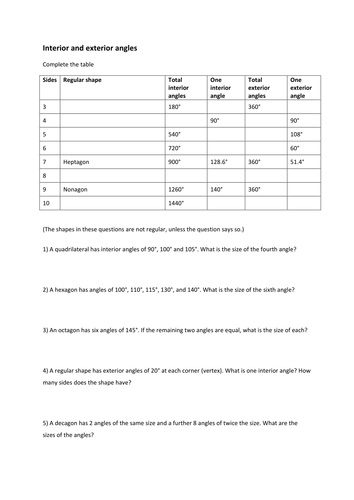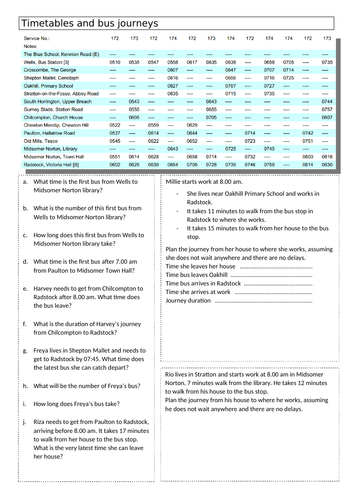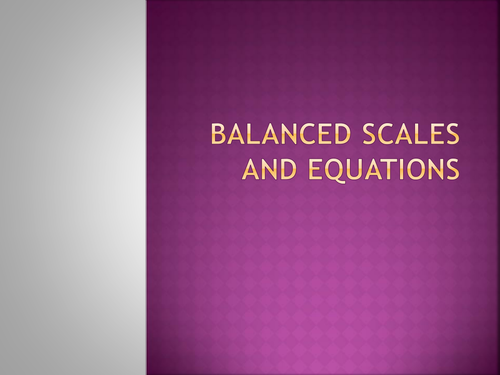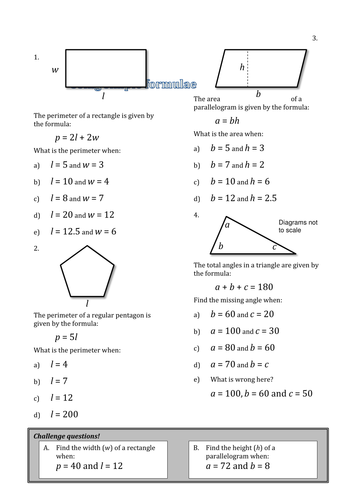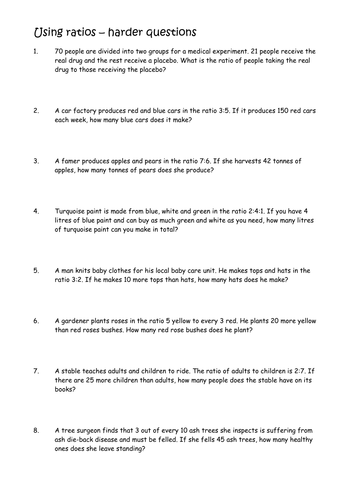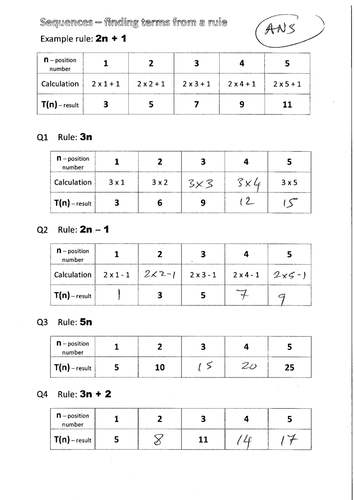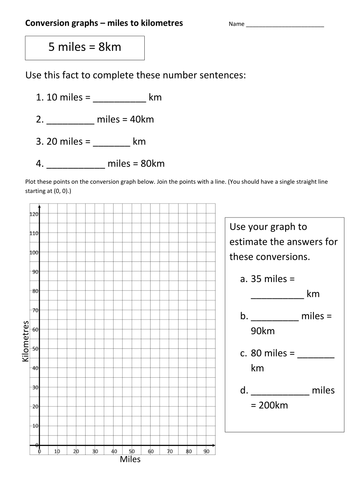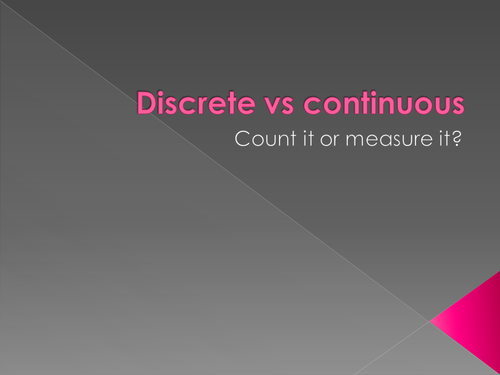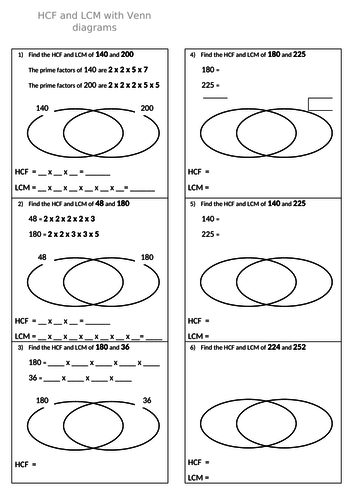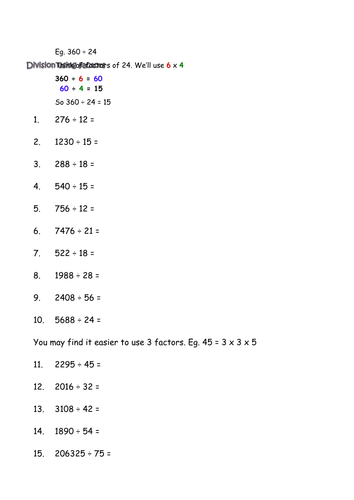
130Uploads
944k+Views
1089k+Downloads
Math

Angles and geometric reasons - intro
Fill-in worksheet introducing correct way to name angles/lines and identifying alternate/corresponding angles. Goes on to get students to identify and then write correct geometric reasons.
Answer sheet to match (although student sheet slightly reconfigured since to give correct names for angles).
Meant as a reasonably easy introductory resource once key ideas have been explained from the board. Hopefully accessible to my Y7s (Yup!)
Second worksheet (with answers) emphasises reasons for each angle

Three from three v2
Worksheet generator: 6 sets of 3 randomly generated activities based on key mathematical skills selected by the teacher on single page for printing.
Add, subtract, multiply, divide, place value operations, decimals, negatives, BIDMAS, rounding, percentages, fractions...
Each pupil in the class is allocated 3 topics to complete in lesson/homework. Idea is to get all 3 questions right for your 3 topics. When pupil gets all 3 questions correct for any given topic, they get a sticker on a pupil record sheet. 3 stickers for that topic means they have mastered it and will not have to do it again :)
Warning: Macro-enabled spreadsheet. Macros MUST be enabled when you load the sheet in order to use the navigation and copy/paste buttons.
Read the Instructions document for further details. A Teacher Record (for use on your computer) and a Sticker Sheet (to put on your wall) are provided.
[12/7/16 Minor improvements/additions]

Dividing in ratio
Powerpoint demonstrating how to divide sums of money in ratio and accompanying scaffolded worksheet with (fairly) straight-forward examples to work out. (10/2/14) Second, slightly harder, worksheet added.
(12/7/16) Answers uploaded

Rounding - dec. places, sig figs and estimation
Structured worksheets on decimal places and significant figures. Plus similar style sheet (with less scaffolding) for estimating using 1 significant figure. (d.p. worksheet added 28/1/13)
(12/7/16) Answers uploaded

Expand double brackets - grid method - scaffolded
Worksheet with scaffolding that reduces for each question for expanding double brackets using a ���grid multiplication” method.

Simple and compound interest - scaffolded
Example and 5 main questions. Straightforward amounts of money and interest rates for 2 to 4 years. All scaffolded as tables. (Need to be able to find 10%, 5% and 2% using a calculator.) 3 challenge questions where they have to draw out their own tables.
Answers provided. (Question 5 and the Challenges have been rounded to pence - use your own judgement regards acceptable values!)

Circumference of a circle - scaffolded
Example and fill-in sheet with 5Qs for circumference with both radius and diameter. With answers

Interior and exterior angles worksheet
Simple complete the table and answer a few questions exercise.
(12/7/16) Answers uploaded

Millionaire - operations with negatives - easy and hard versions
Classic Millionaire format. You may wish to add brackets around negative numbers, or otherwise reformat. Two versions - one with just add/subtract, other much harder with combinations of operations, squares/cubes etc.

Timetables and journeys
Worksheet on reading timetables (using a real bus timetable!) and planning journeys.

Fractions - adding using diagrams
Shade diagrams to add fractions. Fractions without common denominators. First 5 when in same times table, then 3 in different tables. These diagrams pre-drawn and not explained; plus seven questions where pupils need to draw diagrams in their own books.
(Assumes the general idea is already familiar from earlier in curriculum, but you may wish to discuss common denominators and equivalent fractions before they go on to drawing their own diagrams.)

Solving equations - balanced scales
Illustration of balanced scales for solving equations. 1 and 2-step. [21/1/15] Simple matching worksheet added for 1-step equations. [3/3/15] New version of presentation showing how to deal with the variable on both sides.
(12/7/16) Answers to worksheet uploaded

Perimeter of compound shapes
Presentation and worksheet for middle ability Y8 students. (50 minute lesson.) Could be extended for students to calculate area as well.

Substitute in simple formulae
'Quick' worksheet with perimeter of rectangle and pentagon, area of parallelogram and angles in a triangle. Four questions on each.
For brighter Y6 (starting algebra) but also for lower ability secondary.
(12/7/16) Answers uploaded

Ratio - harder worded questions
8 questions. Includes questions where the key to the answer is in the "extra" parts (the difference between the two ratios).
(12/7/16) Answers uploaded

Sequences - using/finding nth term - scaffolded
Use nth term rule and find nth term for linear expressions (2-sided worksheet for each). Worksheets scaffolded. First with missing terms and second to find multiplier and difference between that times table and the sequence given.
Not a lot different to exercises in books but hopefully attractive and less intimidating (limited number of questions!) for a lower ability group.
(12/7/16) Answers uploaded for finding terms worksheet

Draw and interpret conversion graph - miles to km
Scaffolded worksheet asking students to find 4 points, plot these on a conversion graph of miles to km and then use the line to convert 4 other values.
(10/2/14) Two further examples added. (12/7/16) Answers uploaded

Types of data - discrete vs continuous
Qualitative vs quantitative, discrete vs continuous. 1. Cards to sort into two groups - may think of any way to split. 2. Flipchart to structure lesson with links to short videos etc. 3. PowerPoint quiz - identify whether discrete or continuous.

HCF and LCM using Venn diagrams - scaffolded
Assumes learners know how to find prime factors (using factor trees etc.). First question laid out to “fill in”. Subsequent questions have less structure as worksheet progresses.

Division using factors
Straightforward worksheet with example of how to divide using factors and 15 questions. (This is so much easier than long division, so long as the divisor can be broken into convenient factors. Wish I had known about this year ago!)
(12/7/16) Answers uploaded

